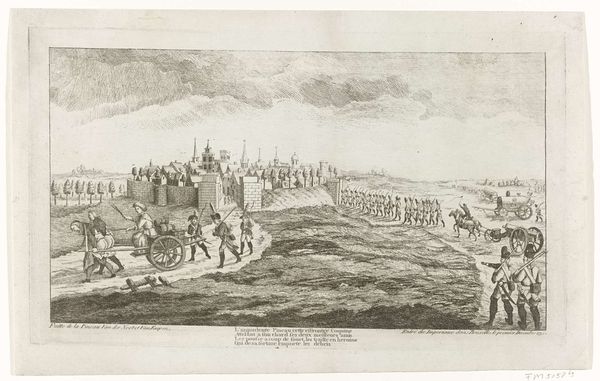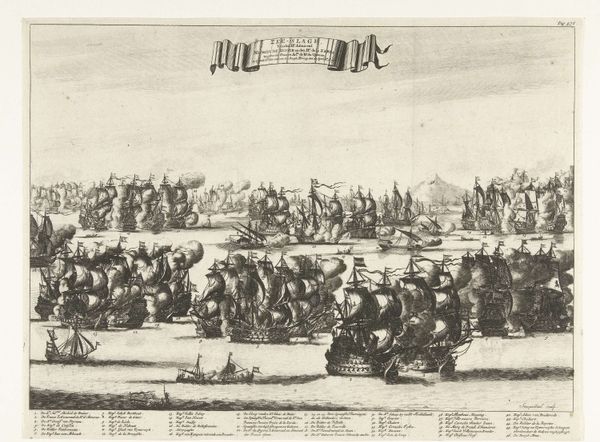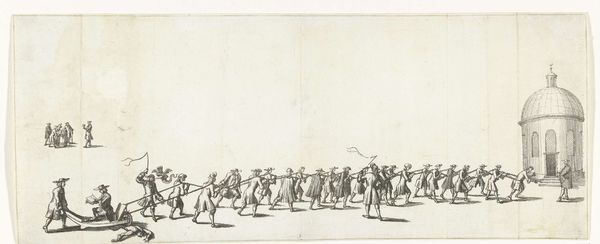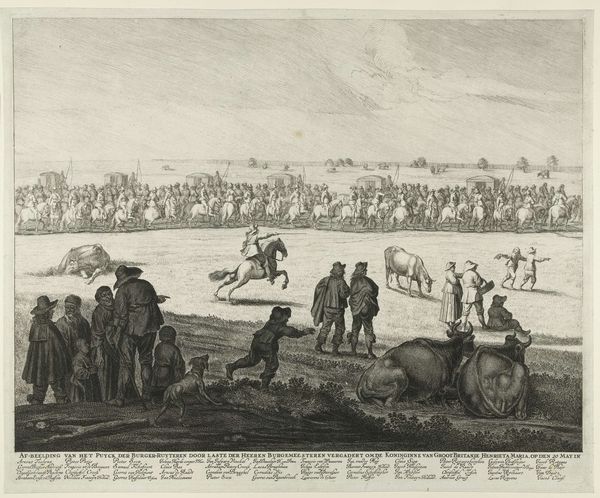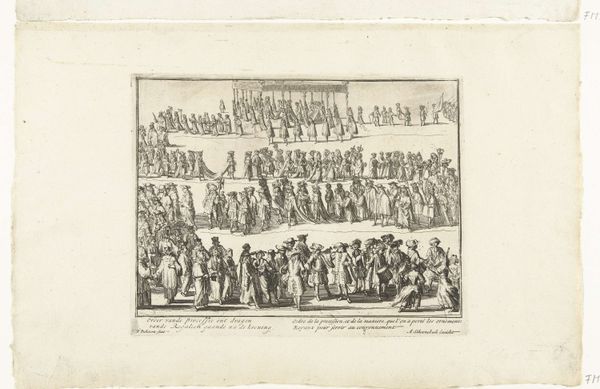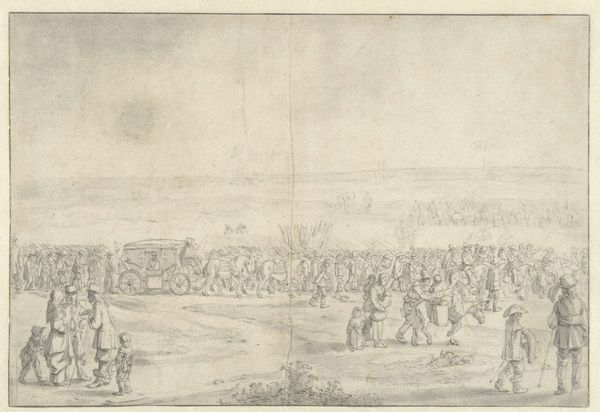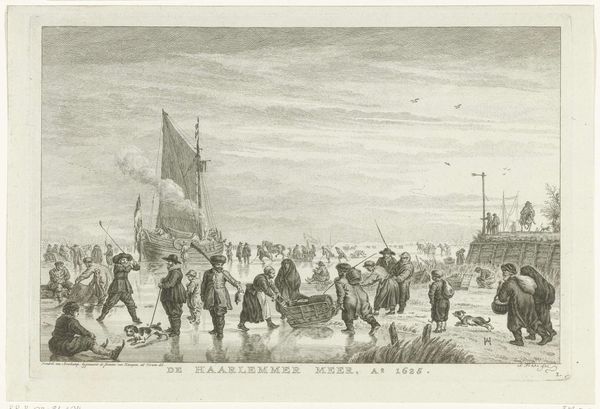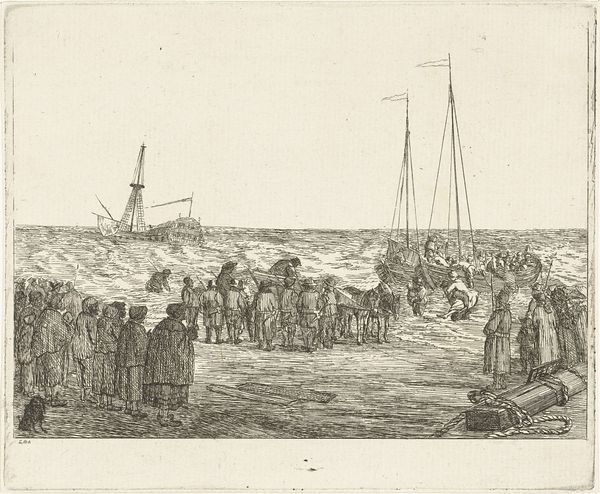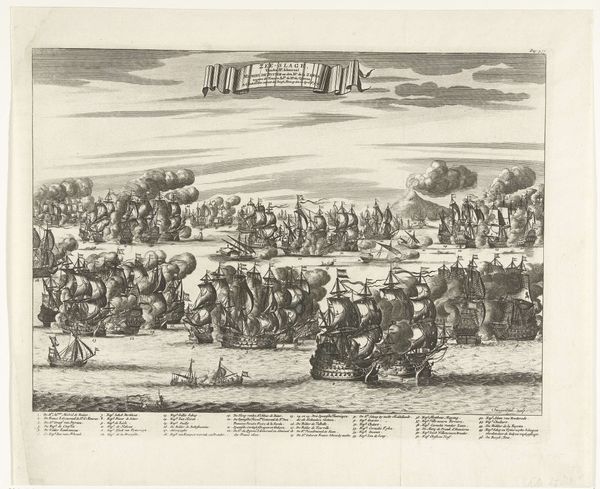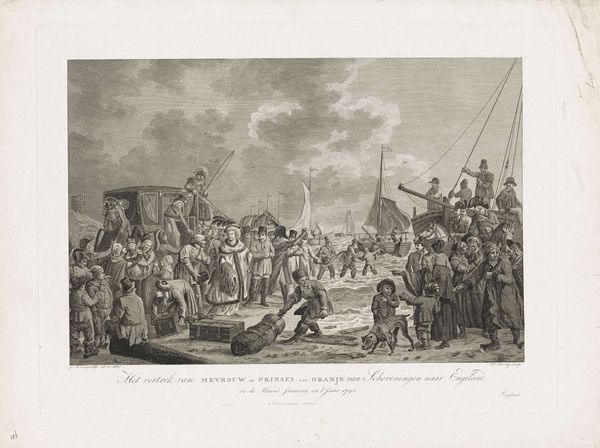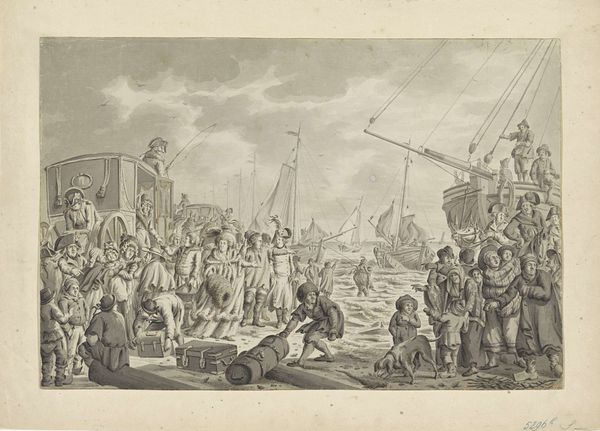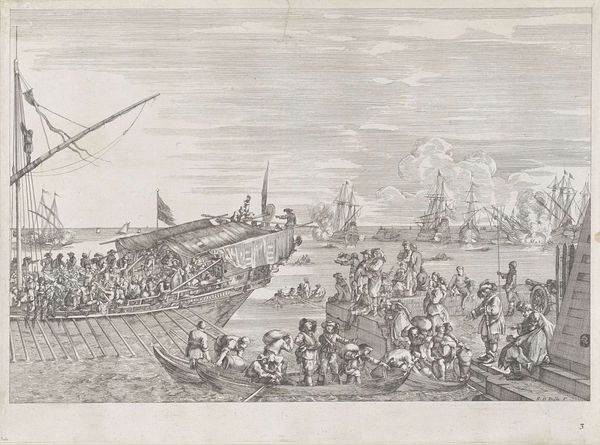
Dimensions: height 173 mm, width 273 mm
Copyright: Rijks Museum: Open Domain
Editor: So, this is "Begrafenis van een dode zalm, 1787" – "Funeral of a Dead Salmon, 1787," an engraving at the Rijksmuseum. It's… odd. All these people and dogs in suits solemnly marching... what's going on here? What do you see in this piece? Curator: Well, immediately I notice the satirical element, particularly the anthropomorphic dogs leading the funeral procession. Considering its creation in 1787, this print likely serves as a commentary on the political and social structures of the time. These sorts of prints served an important role for those that maybe were otherwise unable to read – prints like these made political discourse widely available and served a real public function. Editor: So the funeral procession – all those figures with numbers attached, the pallbearers that are actually dogs… it’s not a literal fish funeral. It’s symbolic? Curator: Precisely. Look at the exaggerated expressions, the carefully constructed procession. It invites us to question who exactly is being mourned here and what institutions or figures of authority the artist might be satirizing. Perhaps, in the late 1780s, there was political instability. The image also draws from the artistic movement known as “the ancients” – do you see how it pulls on themes of classicism? What do you make of that? Editor: I hadn’t thought of it that way! Seeing it as a commentary on power structures of the time – through satire and referencing earlier eras – makes it so much more complex than just a funny drawing. Curator: Exactly. By understanding the social and political climate in which this work was produced, we can better grasp the layers of meaning embedded within its visual language and it’s historical impact. Editor: I see how knowing the context turns a funny picture into real social commentary! Thanks.
Comments
No comments
Be the first to comment and join the conversation on the ultimate creative platform.
